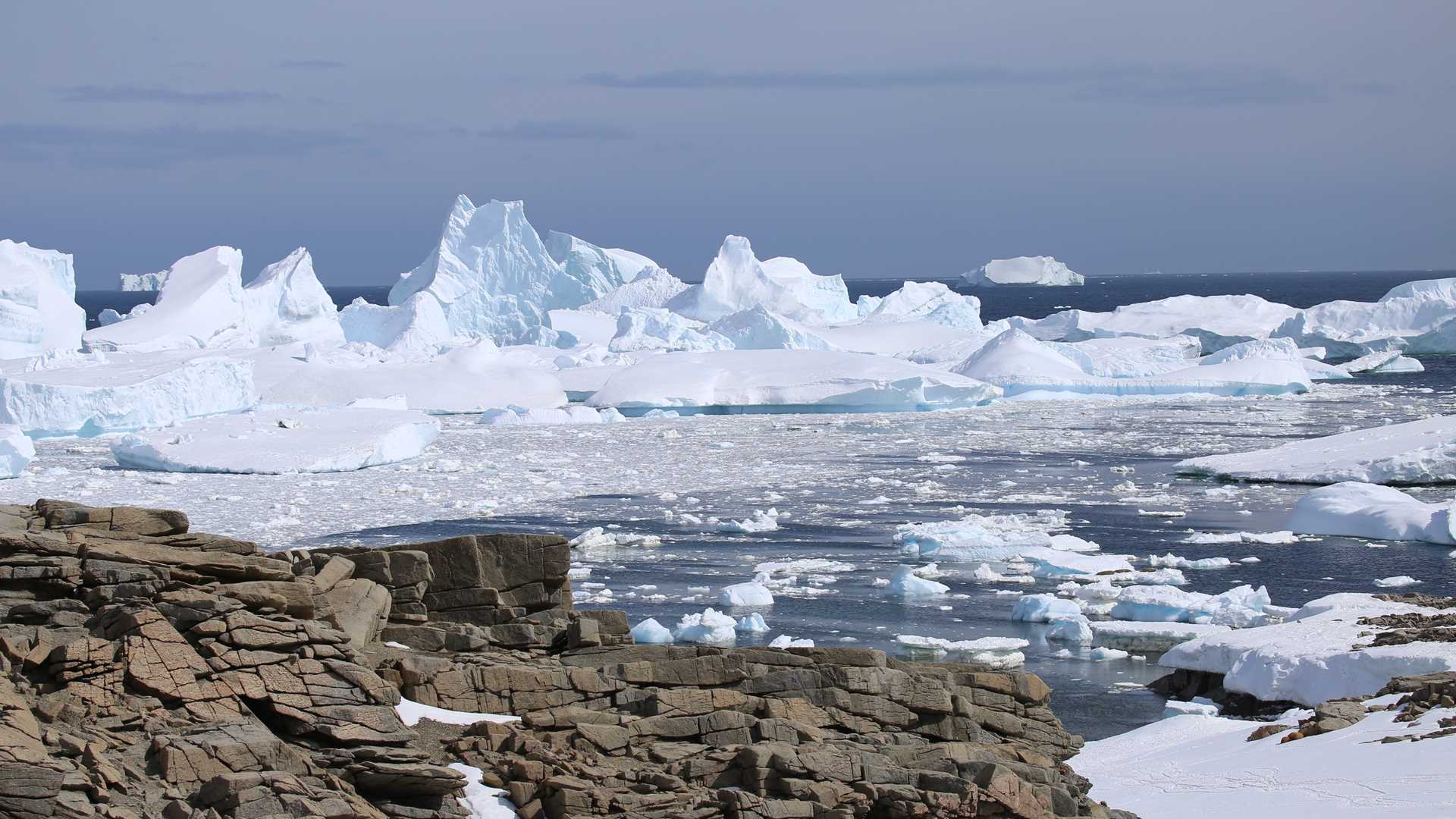Our days at sea have brought us to Marguerite Bay at the most southerly part of the Antarctic Peninsula. This beautiful bay was named by French polar explorer, Dr. Jean B. Charcot for his wife, back in 1909.
There is a little swell to the sea, and we quickly learn the proper ways to get into and out of our landing crafts, the Zodiacs. Along a route of sculpted blue and white ice beauty, we sail. Weddell and crabeater seals lounge on the icebergs. They look up at us and go directly back to sleep. Adelie penguins shoot out of the water and land with a plop and land on bergs floating in the currents.
We hike to the top of a ridge with views of an Adelie penguin colony and an iceberg filled sea. The granite rocks with orange red feldspar give this place its reddish hue.
The afternoon finds us on Horseshoe Island. Base Y stands like a movie set from a World War II film. It is a refurbished hut that was an occupied British base from 1955 until 1960. Summer and winter, the men took geomagnetic readings and studied all that they could about this continent, so full of potential. Instead of the red rock we saw this morning, the rocks at this landing site appear to seep bright green. The cracks of the rocks displayed bright edges of coppery green malachite. The graffiti-like markings were the brightest color we have seen in days.
Many of us take to the hills and hike the granite ridge to the other side of the bay where we take advantage of the beached icebergs for a little sit down.
We end our day with stories, from Naturalist and Photographer Rich Kirchner, about his time living and working in Antarctica.







